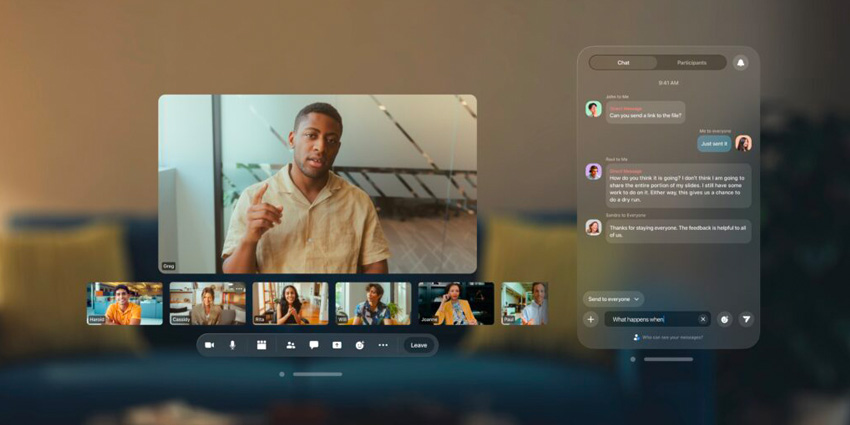Extended Reality tools are quickly emerging as commonplace solutions in the modern business world. Though the technology started life as little more than a novelty, organisations have begun to discover the business benefits of AR, MR, and VR for a range of use cases.
Today, manufacturing companies use VR to design prototypes of new products in scalable virtual environments. Engineering professionals use augmented reality glasses to access real-time insights into the machines they’re working on in seconds. Enterprises are even looking into mixed reality for concepts like holoportation and new forms of collaboration.
However, there’s more to investing in XR solutions than simply choosing a certain type of immersive technology and buying the corresponding tools. Companies also need to think about their privacy and security strategies in an environment powered by a constant flow of data.
The question is, how do you choose an XR vendor with a focus on staying secure?
Step 1: Create your XR Strategy
Any innovative strategy for digital transformation starts with a comprehensive strategy. Whether you’re investing in new AI innovations, or exploring the potential of IoT, you need a clear set of goals in mind, and a vision for how you’re going to implement new tools. The same applies to XR.
Developing a solid strategy should ensure you know which vendors you should be considering to help bring your efforts to life. Some of the points to consider include:
- Type of XR: Extended reality comes in a range of different types, from virtual reality to augmented and mixed reality. Each form of technology has its own security and privacy concerns to address. With VR tools, you may need to think about how much data is stored locally in your device. With AR solutions, you’ll need to consider the way data is transmitted through the cloud, and which information is captured.
- Technology management: Part of developing a strong XR strategy is ensuring you have a way to manage and monitor technology use. Some XR vendors offer tools for this purpose within their devices and software. For instance, Varjo allows users to determine access controls, and choose where data is stored from a VR headset. You can also consider third-party vendors like ArborXR for deployment management.
- Risk analysis: Risk analysis in the XR world means sitting down and thinking about all of the potential technologies you’re going to use and where they pose the biggest threats. For instance, if you’re using eye and hand-tracking tools within your XR strategy, how will you ensure the data collected about individual users remains safe?
Step 2: Explore your Vendor Options (Hardware and Software)
Once you have a comprehensive XR strategy, and a plan for what you want to accomplish with your new tools, you can begin to look into your vendor options. There are countless companies out there offering solutions within the immersive landscape today. It’s important to think about your options from both a hardware and software perspective.
For instance, if you’re going to be implementing VR headsets into your workplace to help teams collaborate with external employees and specialists, how can you ensure the devices remain secure?
Can you look for a vendor with headsets built specifically for companies with certain regulatory requirements to address. Some hardware options allow you to avoid storing data within the local device to avoid risks associated with theft.
Think about the sensors, tracking technology, and other devices used alongside XR headsets too. How will these products operate, and are they designed to preserve secure connections to your internet network? What kind of controls can you put in place for extra safety?
When it comes to software, you’ll need to ask yourself what kind of work you’re going to be doing with your XR system. If you’re going to be building a “metawork” environment in the Metaverse, how can you ensure team members remain secure when entering this digital environment? Can you set up two-factor authentication and encryption for data?
Implementing the right plan for XR innovation may mean using different vendors for your hardware and software needs. If this is the case for you, make sure the two solutions integrate seamlessly.
Step 3: Discuss Security Options with Your Vendor
Choosing the right vendor for your XR solution often means doing extensive research into the solutions each company can provide. With your strategy in mind, you’ll be able to approach the XR companies you’re thinking of working with, and ask questions about the security and privacy standards they have in place.
For instance, if you’re using Unity to build a Metaverse environment for your employees and customers, you can connect with the Unity team to ask about how your IP and information will be protected in the applications you create. There’s also plenty of documentation available online from most businesses in the XR space to help guide you.
If you’re taking advantage of a new software solution built specifically for your team’s VR headsets, talk to your vendor about the access controls you can put in place. Can you ensure team members are secured with extra levels of authentication, or leverage biometric security? Find out where your vendor stores the data collected by software and hardware so you can use your XR devices.
Most of the top vendors will allow you a certain level of control over how your data is managed. However, there are some companies out there who still store some (less sensitive) pieces of information for their own purposes.
Remember to Plan for the Future
Keep in mind, when you’re investing in XR security and privacy solutions, it’s important to be aware not just of the security issues and threats you’re facing today, but the issues you might need to deal with in the future. Right now, you may simply want to ensure the information collected by your eye and hand tracking tools remains firmly within your control.
However, in the future, if you start branching into concepts like the Metaverse and NFTs, you’ll also need to think about how you can protect your intellectual property and keep users safe in virtual environments. Taking a holistic view will ensure you’re ready for whatever might happen in your future XR strategy.







